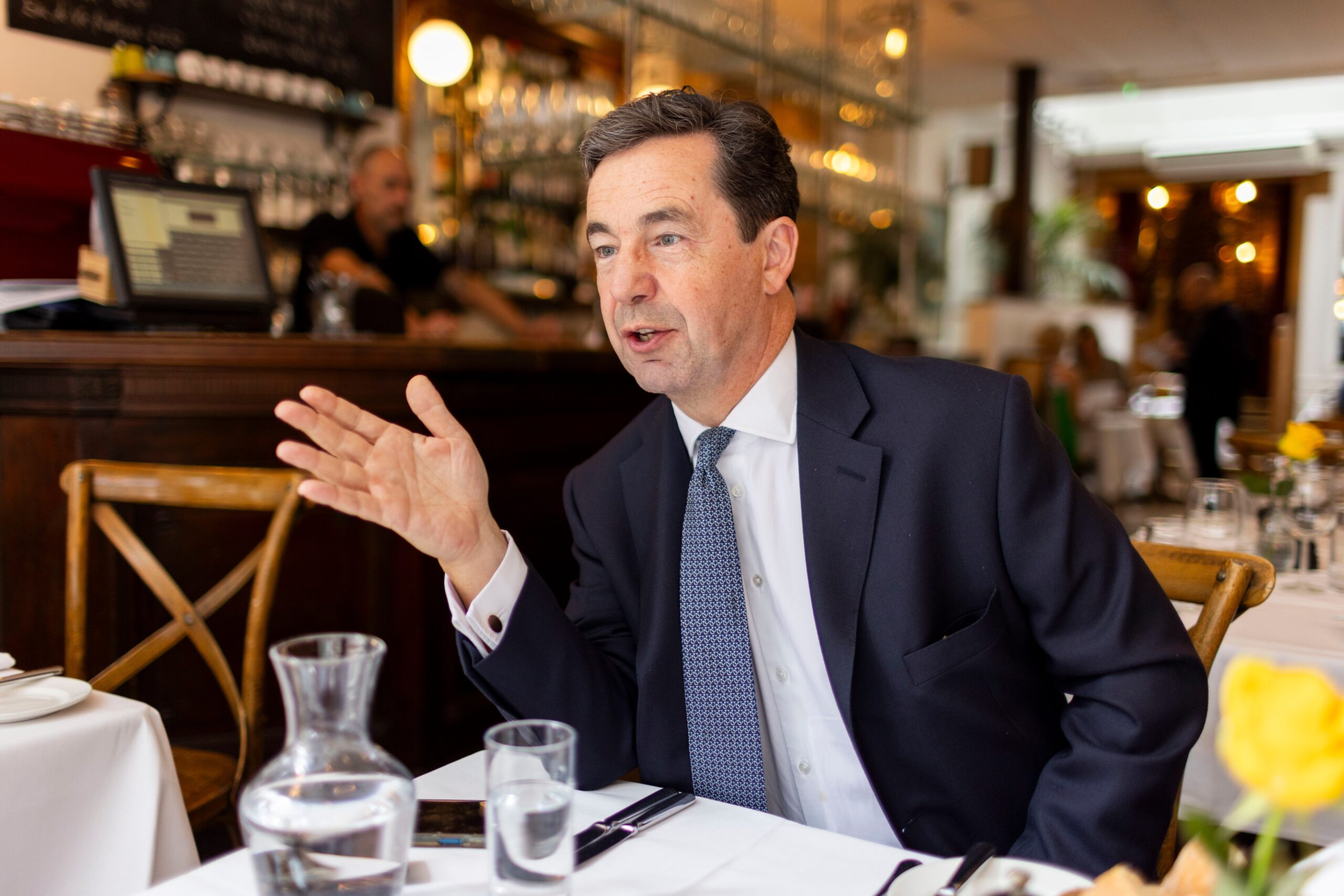Lower interest rates signal a revival in green energy investment
No so long ago, clean energy funds were the darlings of the investment trust world. Rock-bottom interest rates and a clamour for strategies that focused on environmental, social and governance issues fuelled a decade-long boom in trusts backing wind, solar and battery storage assets.
By 2020 the sector traded at an average premium of almost 20 per cent compared with the value of underlying assets, according to data compiled by the Association of Investment Trusts. Greencoat UK Wind, the oldest and largest clean power investment trust, raised just over £1 billion in equity in 2020 and 2021, almost a third of its stock market value. During the latter year, Greencoat Capital, which operates the trust, was bought by Schroders, the FTSE 100 asset manager. The deal sat “at the cross-section of all the things that are important to our strategy”, Peter Harrison, Schroders’ chief executive, said at the time.
Today, the Greencoat trust trades at a discount of just over 10 per cent compared with its net asset value. Clean energy funds overall are priced at an average discount of about double that amount. As interest rates have risen rapidly and with power prices having eased from the highs reached in the aftermath of Russia’s invasion of Ukraine, investors have shunned the £15.5 billion sector.
Yet there are growing expectations that investors are about to be lured back. The key, as before, lies with interest rates, with the Bank of England having just lowered rates for the first time in more than four years and with City traders expecting further cuts in 2024.
“We think that these interest rate cuts will narrow this gap, at least somewhat in terms of discounts, because of the lower required returns demanded by these investors,” James Wallace, an analyst at Winterflood, the research provider, said.
Then again, he noted that falling interest rates could be slower to feed through to the discount rates used to value assets, partly because of the relative scarcity of transactions being completed in the market compared with historic levels. Traders are pricing in rate cuts of up to 75 basis points in Britain before the end of this year, “so we think we do need that type of level of cut to really have an impact. It does need to be substantial.”
There are also question marks not only over where interest rates need to settle for share prices to move back in line with net asset values, but also whether they will ever attain the valuations achieved without interest rates returning to sub-1 per cent lows.

“It’s feasible that these companies trade at or around NAV, but unless you’ve got the rates we saw pre-2020, they’re not going to trade on 10 per cent to 20 per cent premiums to book value,” Ben Newell, an analyst at Investec, said.
Interest rates are not the only challenge. London’s nascent battery storage funds sector is labouring under questions about cashflow. Gresham House Energy Storage, Gore Street Energy Storage Fund and Harmony Energy Income Trust trade at anywhere between 45 per cent and 55 per cent below their net asset values.
“I think that is largely to do with the volatile nature of the revenues,” said Paul Mason, chief investment officer at Harmony Energy, the investment manager to the eponymous London-listed trust.
Unlike wind or solar assets, which have contracted income streams through subsidy regimes, battery funds largely generate revenue by exploiting differences in wholesale power prices, buying energy when it is cheap and selling it back to the market when prices are higher. A more substantial decline in energy prices than expected after war broke out in Ukraine is one factor that has set back battery funds.
Harmony, along with Gresham, has scrapped dividends for this year. “The lesson we’ve learnt has been that taking an asset class that has [an unpredictable] merchant revenue profile and trying to pledge a fixed level of dividend is not always deliverable,” Max Slade, an adviser at Harmony Energy, said.
When interest rates were close to zero, investors mistakenly viewed renewables as a bond proxy, according to Alex O’Cinneide, the chief executive of Gore Street Capital’s investment committee, which manages the Gore Street Energy Storage Fund. “It’s not a proxy for a bond in that we are selling a service, we’re selling electricity,” he said.
A potential shift in appetite for ESG strategies also has been identified as dimming the appeal of green infrastructure funds. According to numbers compiled by Calastone, a data provider, last year ESG funds were hit by the worst selling by British investors since it began compiling the figures, with billions withdrawn from such strategies. Flows this year have been better.
“During a cost of living crisis and when things are a bit slower in the economy, the focus can be a bit more on the economics and making returns. So I think that’s why we’ve seen a shift away from ESG a bit,” Wallace said.

While share prices languish below asset values, renewables investment trusts are prevented from raising capital on the equity market, choking off a critical source of financing for new clean power assets.
“The share price has been challenging now for 18 months. During that period, our approach has been really focused on balance sheet management,” said Minesh Shah, fund manager of The Renewables Infrastructure Group, at £2.6 billion one of the largest trusts in the sector. The fund, widely known as Trig, has stepped up disposals, selling £210 million in assets over the past 12 months, which has been put towards reducing debt, servicing the dividend and funding the development of new wind and battery storage facilities.
If these funds are more constricted, it also diminishes an important pool of potential capital for larger renewables developers, which often sell stakes in bigger projects or older schemes to investment trusts. This is at a time when the government has set stretching targets to double onshore wind, to quadruple offshore wind and to treble solar capacity by the end of the decade.
“There’s a very big issue there about what it means in terms of a new government, in terms of the build-out of our renewables infrastructure, that a main avenue for private capital to go into renewables in the UK is intrinsically shut,” O’Cinneide said.




Post Comment